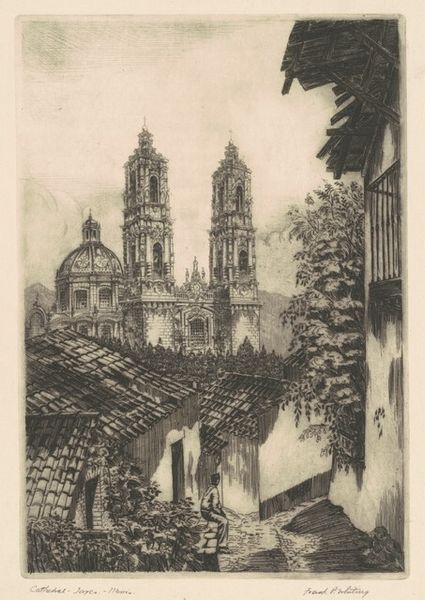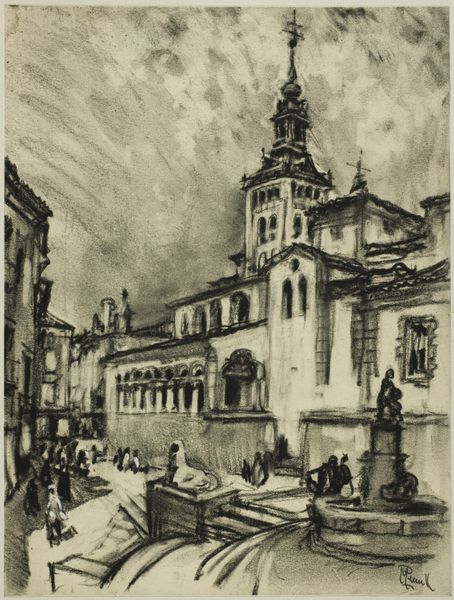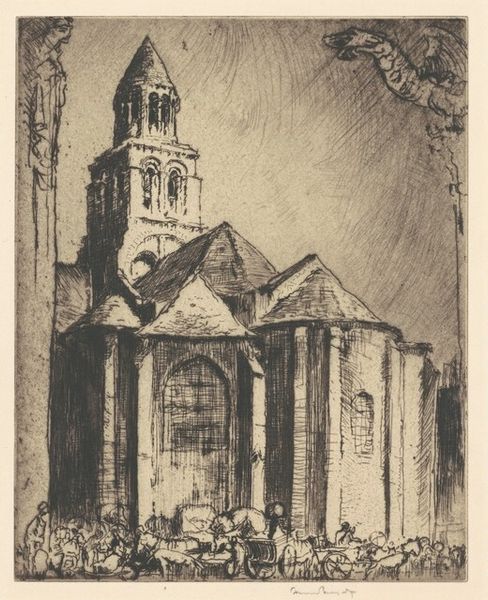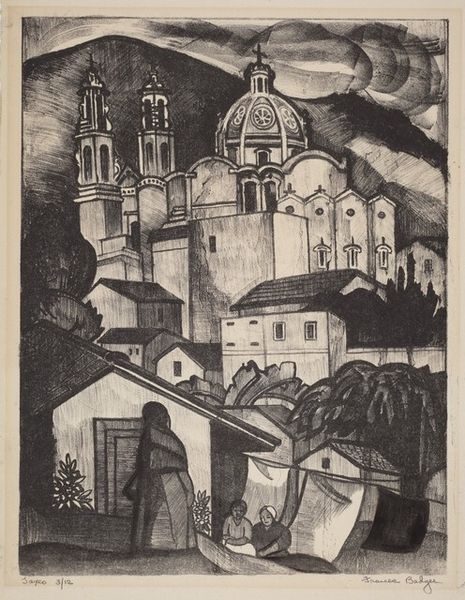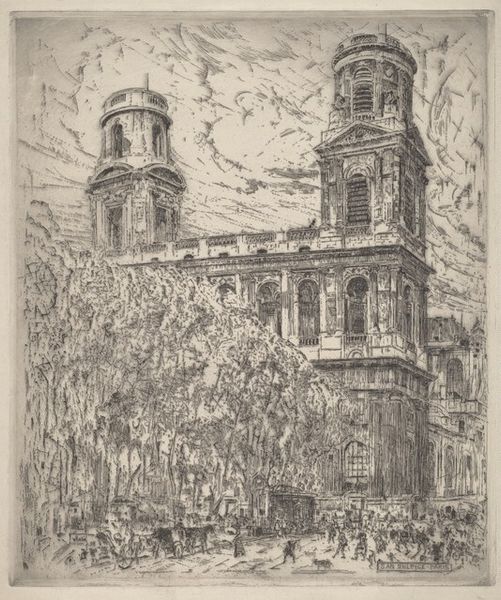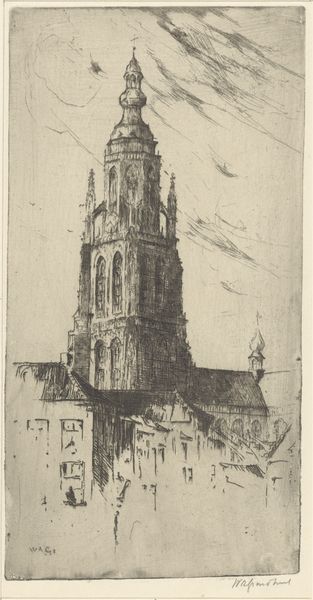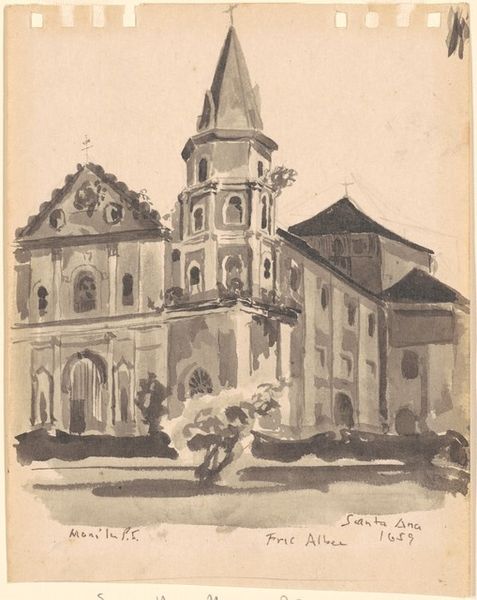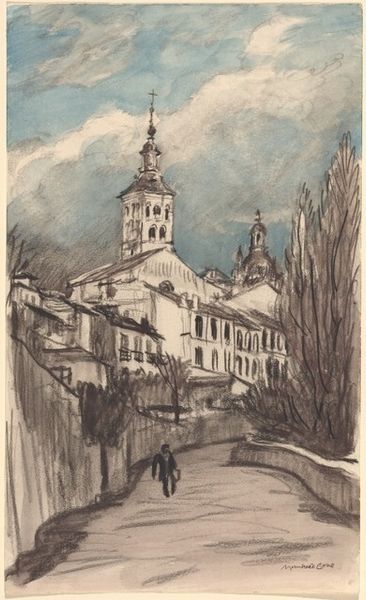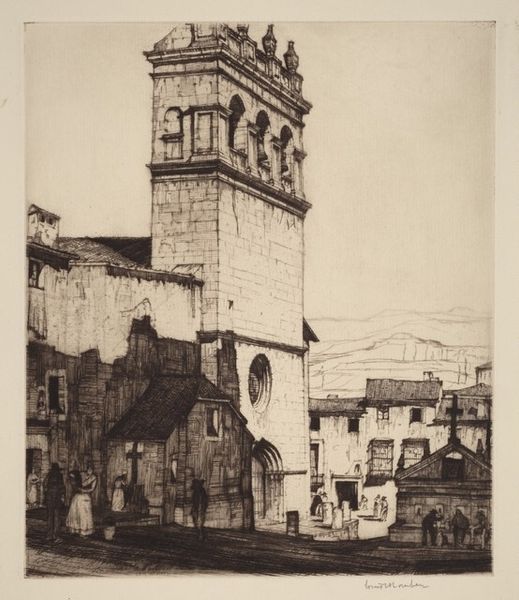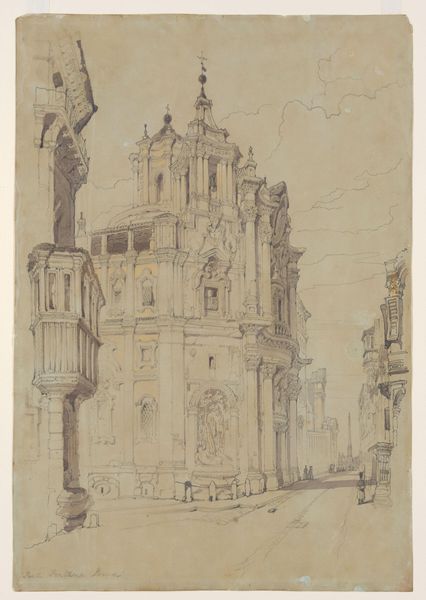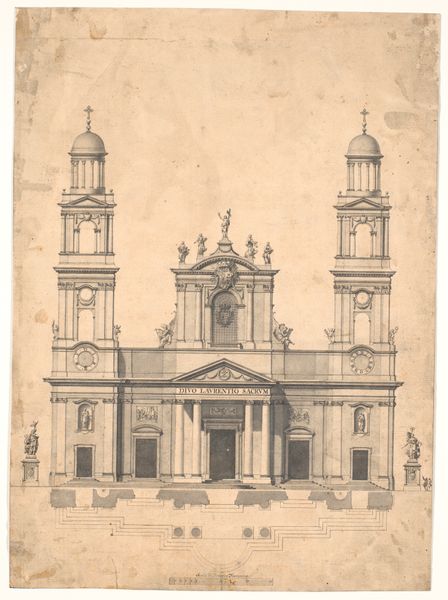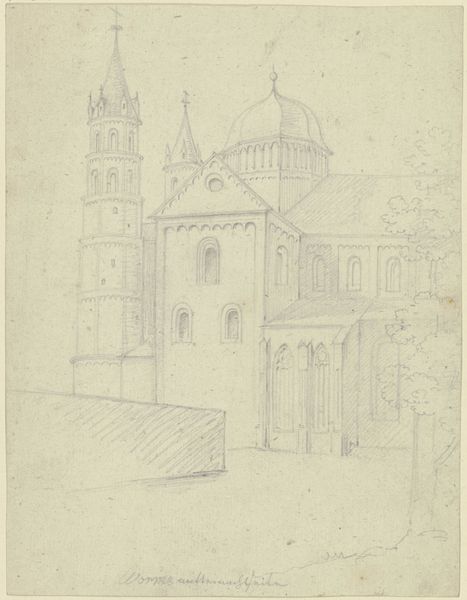
drawing, print, paper, charcoal
#
drawing
# print
#
landscape
#
paper
#
cityscape
#
charcoal
Dimensions: 254 × 195 mm
Copyright: Public Domain
Curator: Welcome! We are looking at Joseph Pennell's "The Cathedral, Toledo", circa 1903. It's a drawing and print on paper, rendered primarily in charcoal, now residing at The Art Institute of Chicago. Editor: The first thing that strikes me is the moodiness—a somber almost Gothic grandeur achieved with such limited means. The dramatic contrasts pull you right into the city square. Curator: Precisely. The high contrast between the white paper and dark charcoal allows Pennell to define the spatial relationship between architectural elements, the steeple emerging above, and to structure our field of vision, while also hinting at underlying geometries within Toledo's urban landscape. Editor: And consider the laborious process! Pennell used charcoal—a material born from burning, from transformation. Charcoal's friability, its ephemeral nature, speaks to the impermanence of the city, despite the cathedral’s aspirations of timelessness. Curator: Note how the artist uses the charcoal's inherent properties to suggest atmosphere. Observe how Pennell exploits tone; he seems to model the volumes through subtle shifts of dark and light across the facade of the cathedral and smaller architectural elements. Editor: Right. Pennell isn't merely depicting a cathedral; he’s highlighting the means by which the modern industrial age reinterprets the hand-made medieval structure. The reproduction allows a broad distribution for what was originally a carefully constructed artwork. The print form gives more reach than the architectural model, which can be seen as democratizing an elite and rarified cultural icon. Curator: I understand, but must interject. Note Pennell’s dynamic composition and tonal relationships, carefully balanced, achieving an emotional intensity while offering insights into turn-of-the-century aesthetic theories about the formal elements of picture making. Editor: A remarkable contrast. Even with his careful articulation, his work provides an alternative model in which the architectural hand-made building can reach a far greater population than ever initially imagined. Thanks for exploring that dichotomy together. Curator: Yes, thinking about his interplay between composition and execution really illuminated those crucial elements of aesthetic philosophy from the era. Thank you.
Comments
No comments
Be the first to comment and join the conversation on the ultimate creative platform.
